PURSUING THE PHILOSOPHY OF MA
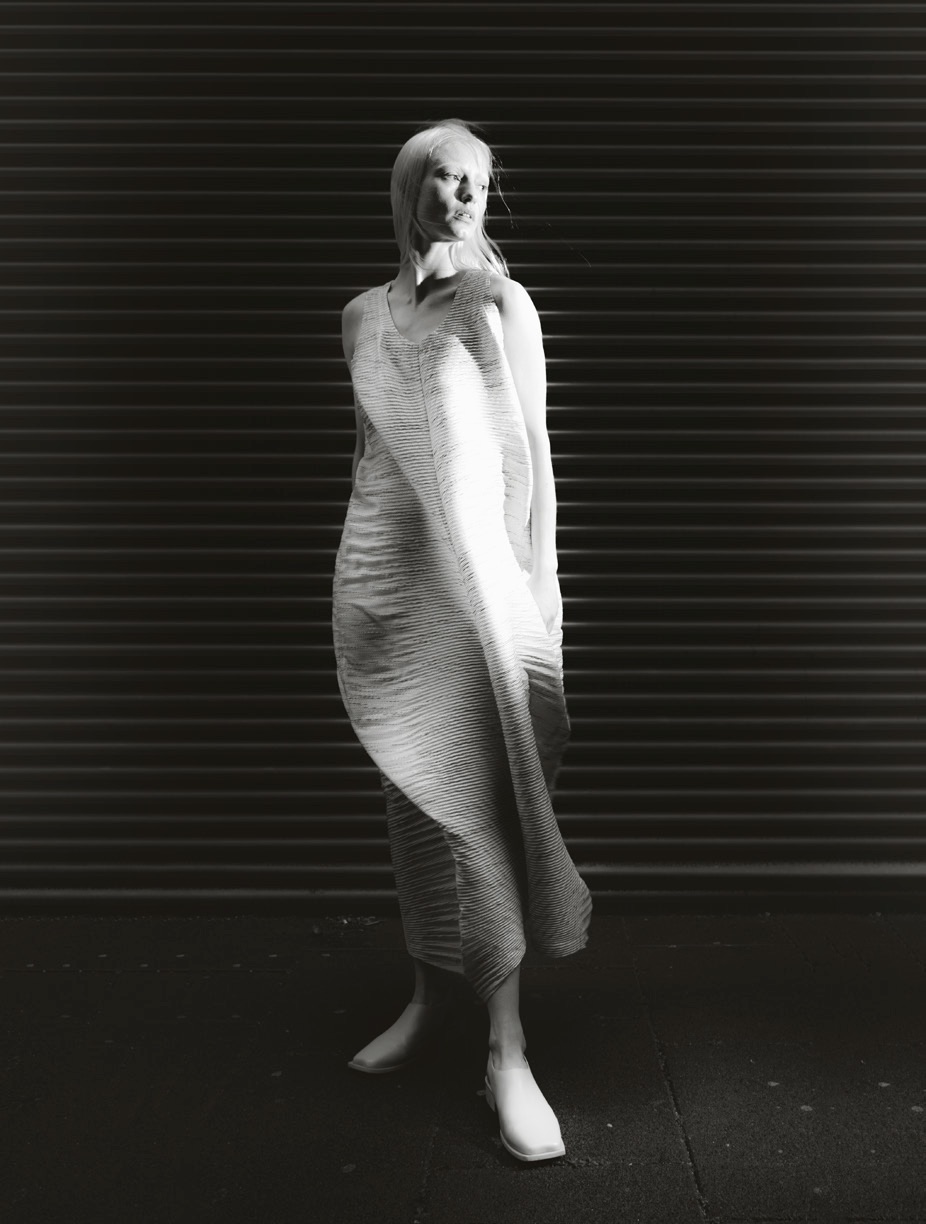
Raised in Kyoto, Japan by his seamstress mother, Satoshi Kondo has had fashion and design running through his veins since childhood. Named Director and Head Designer of the iconic fashion house, Issey Miyake in 2019, Kondo has established himself as an expert in poetic re-invention. A graduate from the Ueda College of Fashion, and a master in Fashion Creator Industry, Kondo was bestowed the SOEN Magazine Award for his early talents and budding spirit. Since these fresh beginnings, he has emerged into creating viral sensations, floaty bodysuits and slinky silhouettes. Glamcult, captivated by his Spring/Summer ‘22 collection, A Voyage in Descent, reached out to the designer to investigate his process, ethos and reinterpretations of the brand’s heritage.
Starting his Issey Miyake journey 15 years ago, Kondo has explored the many corners of the brand. From PLEATS PLEATS ISSEY MIYAKE, HOMME PLISSÉ, IKKO TANAKA ISSEY MIYAKE, Session One, amongst many other special projects, all leading up to his current position as ISSEY MIYAKE’s Director of Design. And with all of this experience under his belt, it’s safe to say, the man knows his pleats. Replacing his much-adored predecessor Yoshiyuki Miyamae, Kondo has described his journey at Issey Miyake so far as “fruitful”, whereby he has “acquired the knowledge, skills, and experience” that enable him to take on this prestigious role. When we asked about this journey, and some of his highlights, Kondo tells us, “out of all of my experiences at the company, the most inspiring thing has been learning from Miyake’s thinking and approach to design” — one known for its future-oriented concepts and innovative ease. He continues, “as designers, we should think about how our work can inspire people, how it can make our everyday living richer and more lively”, though crucially, he acknowledges that this industry still has much to discover. As it is the concept of expanding his expertise that he explains, it “motivates me to move forward”.
And although Kondo’s history at Issey Miyake is extensive, the longevity of the brand goes back over 50 years to 1970s Tokyo. All beginning with a transformative trip Miyake himself took to New York with American fashion-mogul, Geoffrey Beene. Dawning the brand with his first, small collection of dyed T-shirts and embroidered coats. Later becoming a pivotal member of the prêt-à-porter (ready-to-wear) organisation, and is associated with “founding Japanese Avant-Garde”. One of Miyake’s most important lessons he passed to his legacies is “to not attempt to create trends, nor follow them”, rather, the key, Kondo tells is, “being original, and making that originality represent Issey Miyake”. And, though easy to say, you may be thinking — but how to be original? Well, Kondo explains this too, “to be able to create original clothing, you must integrate both craftsmanship and technology — remaining in favour of neither — into the process of design and making”. So, in balancing the delicate combination, Kondo has become a pioneer who is able to “represent the brand’s philosophy”. However, his ultimate goal as director is “to inspire joy and beauty, making people rethink what a piece of clothing is, and therefore, what it can be”.
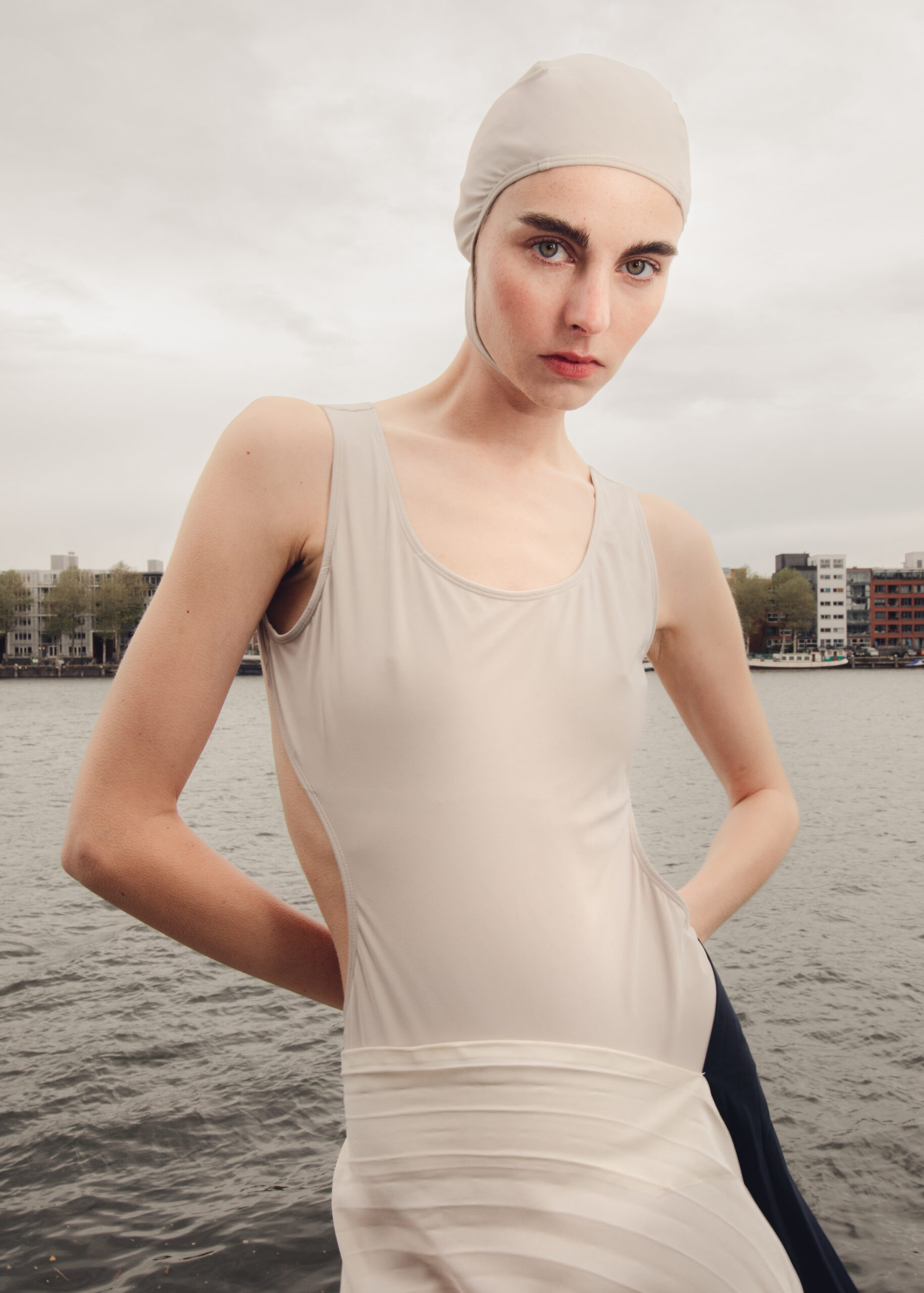
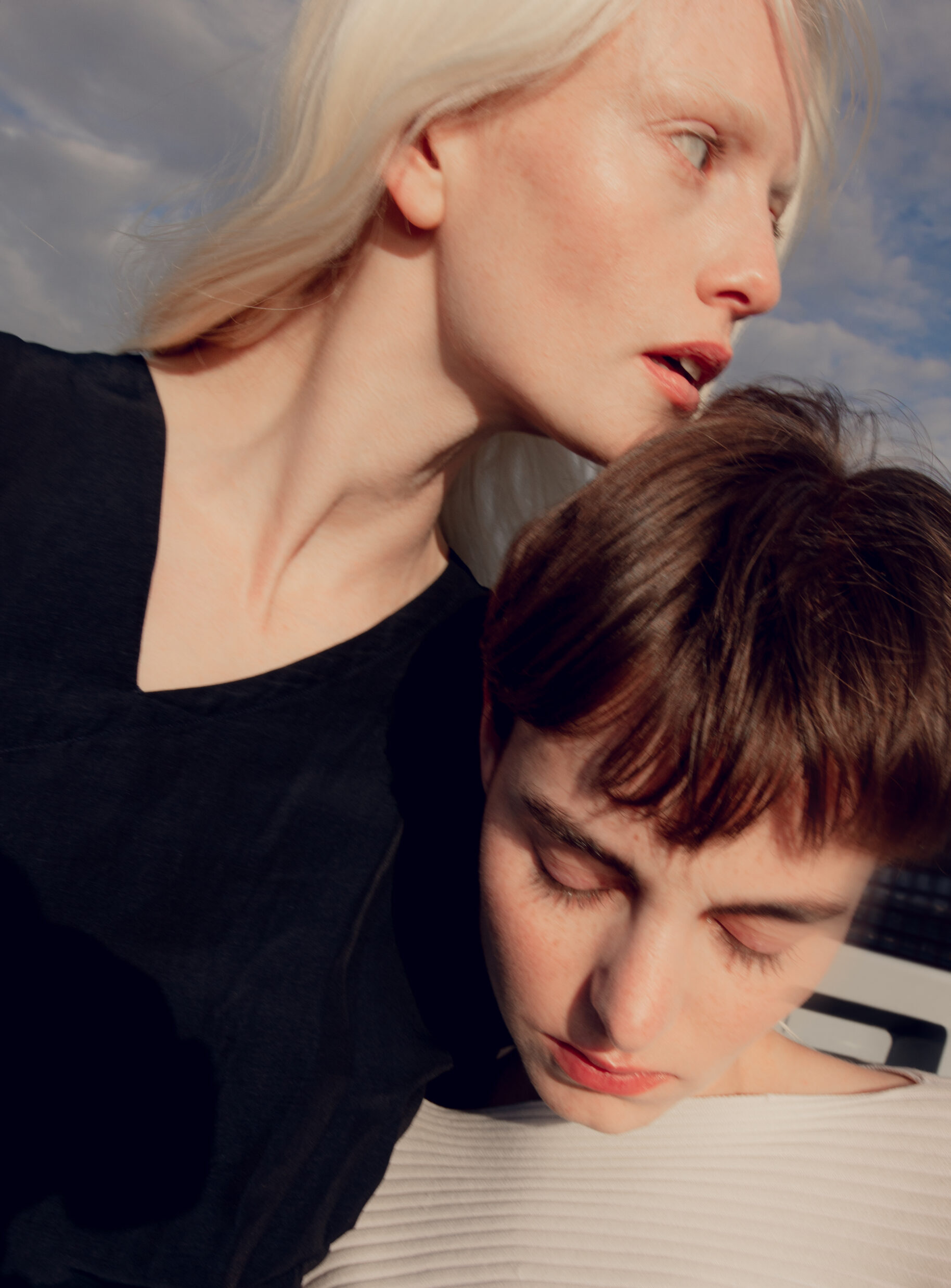
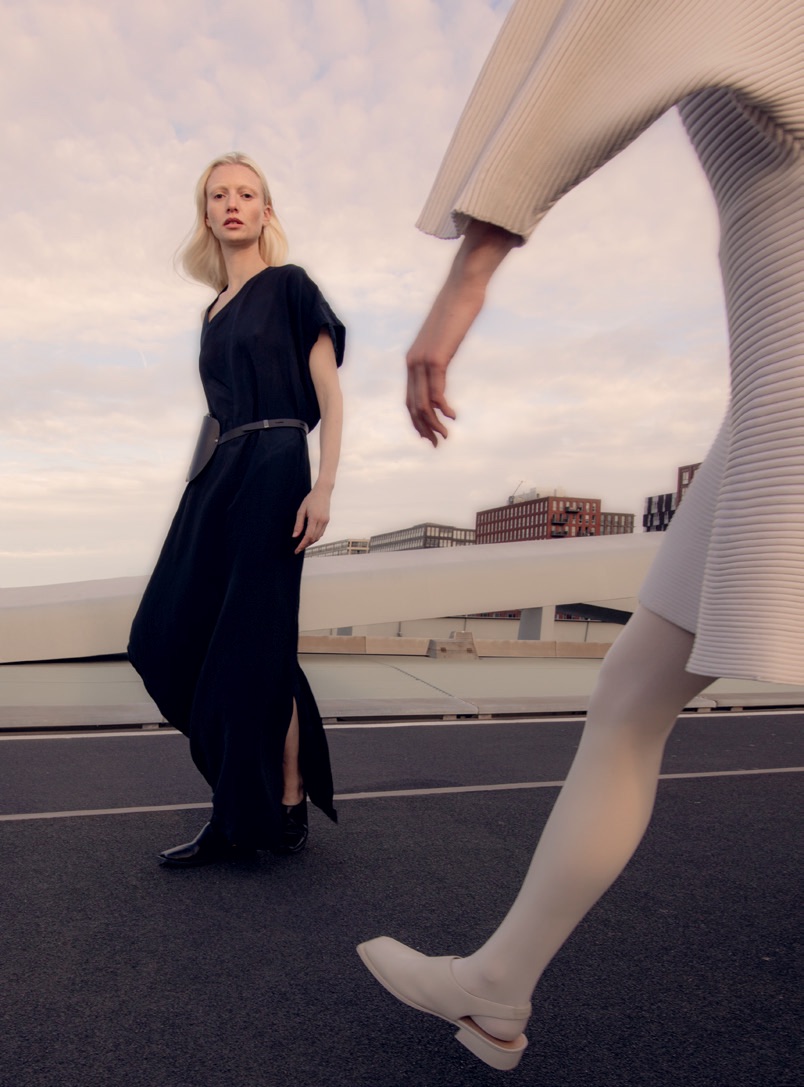
Alongside the Issey Miyake philosophy of intersecting craftsmanship and technology, Kondo tells us, lies the principle of Ma: the Japanese concept of negative space. The Kanji character combines the symbol of the gate (門) and the sun (日), creating an entrance in which sunlight emerges through the empty spaces (間). These spaces are not seen as the absence of something, but rather, as a positive entity filled with an energy which speaks to silence. Translated into the Miyake collections, Kondo illustrates, the fundamental concept as being, “the piece of cloth”. “It is about covering and enveloping the body with one piece of fabric, thereby leaving unfilled space and air between it and the body”. By pursuing the philosophy of Ma within his designs, he divulges, “we are designing both the presence and the absence to create a sense of ease and beauty”. Relating this more specifically to his designs, he gives us an example of one of his starting points — the Japanese obi sash.“I thought of the design of a Japanese obi sash, which is a piece of fabric that’s flatness lends itself to a tube-like band around the waist”. This “tube-like structure”, with its “unfilled space and air, adapts to different body shapes, so for example, when applying pleating to it, it allows for a more stretchable shape where the tube can gently fit the body, and is able to be worn by a wider range of body types”. With the ability to adapt ancient philosophies to something so fluid as fashion, Kondo has found the perfect balance of timelessness and style. He also speaks on how far he takes this philosophy, “I often find myself designing garments that use fabrics in their entirety to create the space in-between as opposed to garments that divide fabrics into many pieces”. The women’s line, he clarifies, “has always been designed in this way”, as the making-process is completely original, where “storytelling is essential” to every collection, “guiding them through the form, colours, texture, and/or other qualities along the way”. “The story or the concept of a collection serves more than the source of inspiration” he examines, as each piece is defined by it’s narrative and the journey it has taken from the initial emptiness of Ma, to it’s final form (and actualisation) onto the wearers body.
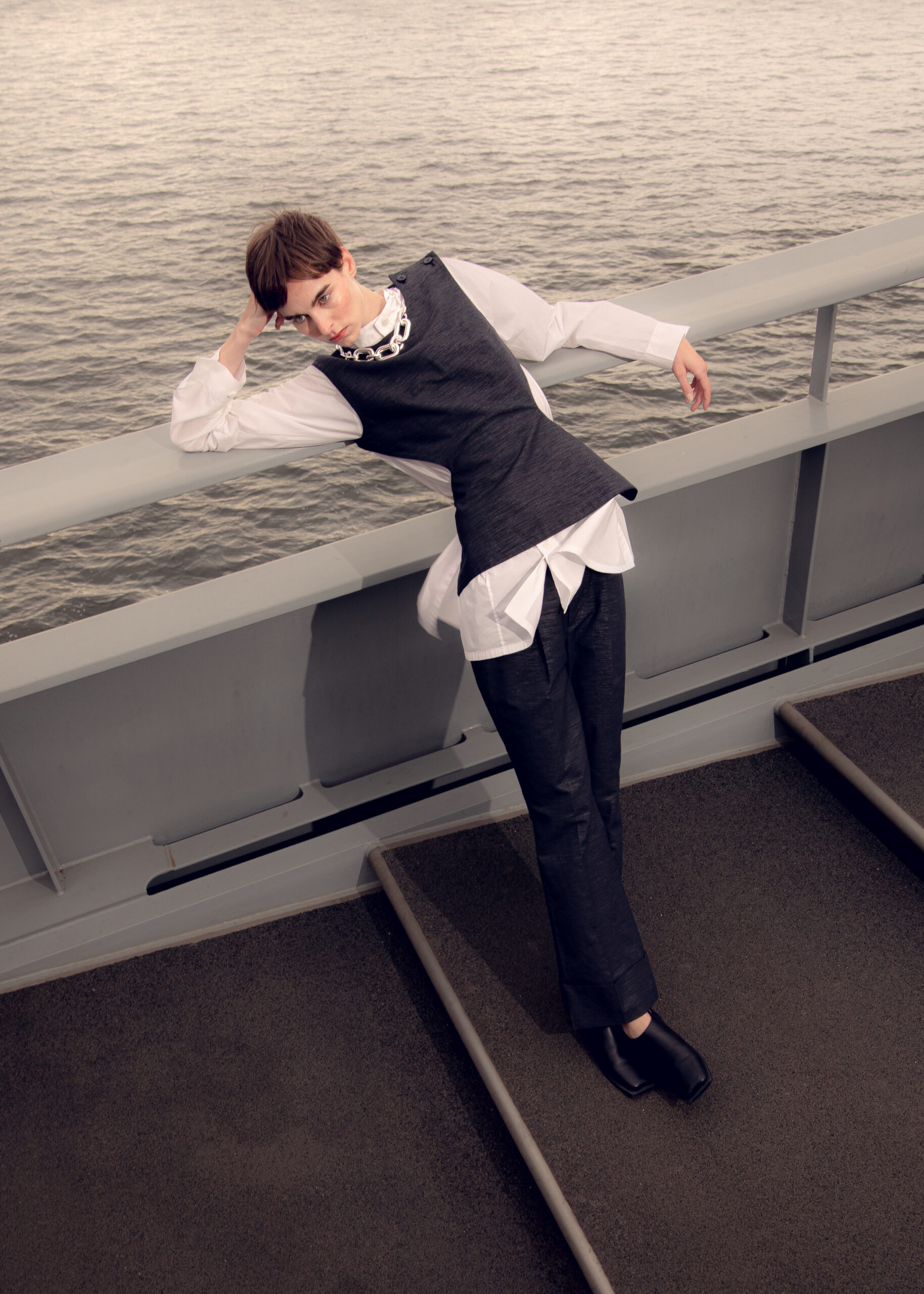
Taking on these principles, the Issey Miyake Spring/Summer ‘22 collection, A Voyage in Descent, is furthered inspired by a journey into the deep sea, “travelling downward into the depths and making new discoveries became our starting point”. And it was the anonymity of the sea, the power of the unknown, and the world’s biggest blank canvas which gave Kondo and his team the ability to “design and make garments of unprecedented forms”. Making “many discoveries in the design along the way”, the Spring/Summer collection was an instantaneous hit of six series: SILENCE, CARVED, SWIMMING, LINK RINGS, FLUIDITY LOOP, and SWIMMING HUE. In the first chapter, SILENCE, Kondo begins, is focused on the stillness of first entering the water. The fabric, glistening to the eye, appears as watercolours gliding across both the material and the body. This effect was made “with the craftspeople of Kyoto who have honed the hikizome dyeing technique used in this series”. Drawn onto damp fabric with brushes, “the patterns continue to change as the dye solutions seep in and develop until the fabric dries”. This highly developed technique catches the essence of water, evoking a picturesque scene of a still lake. Continuing this thought, Kondo described the effect as a “flow”, where “the blurring in the patterns has a synergy with the story of the collection as a whole”. Moving into the sharp and tailored, CARVED, made from Washi paper and biodegradable lamé fibres, the collection then glides into the SWIMMING series. Using another printing technique, Kondo captures the imagination with shapes reminiscent of budding waves and aquatic life — differing from the previous stillness. These strong prints give way to the powerful shapes that follow in LINK RINGS — a section that he cheekily teases at the beginning of the collection. Sharing deeper insight on the now-iconic pieces he informs, “we started with the idea of connecting multiple ripples (round fabrics with concentric pleats) by adding one after another. The garment we ended up with has qualities like those of a mysterious critter found in the deep sea.” The natural ebbs and flows of water is further explored in FLUIDITY LOOP, a chapter made up of rhythmically knitted pleats. The fluid form, “reflects the freedom to explore, as there is no guide nor path in the ocean.” The collection ends on the colourful notes of SWIMMING HUE, a vibrant celebration of this unseen world.
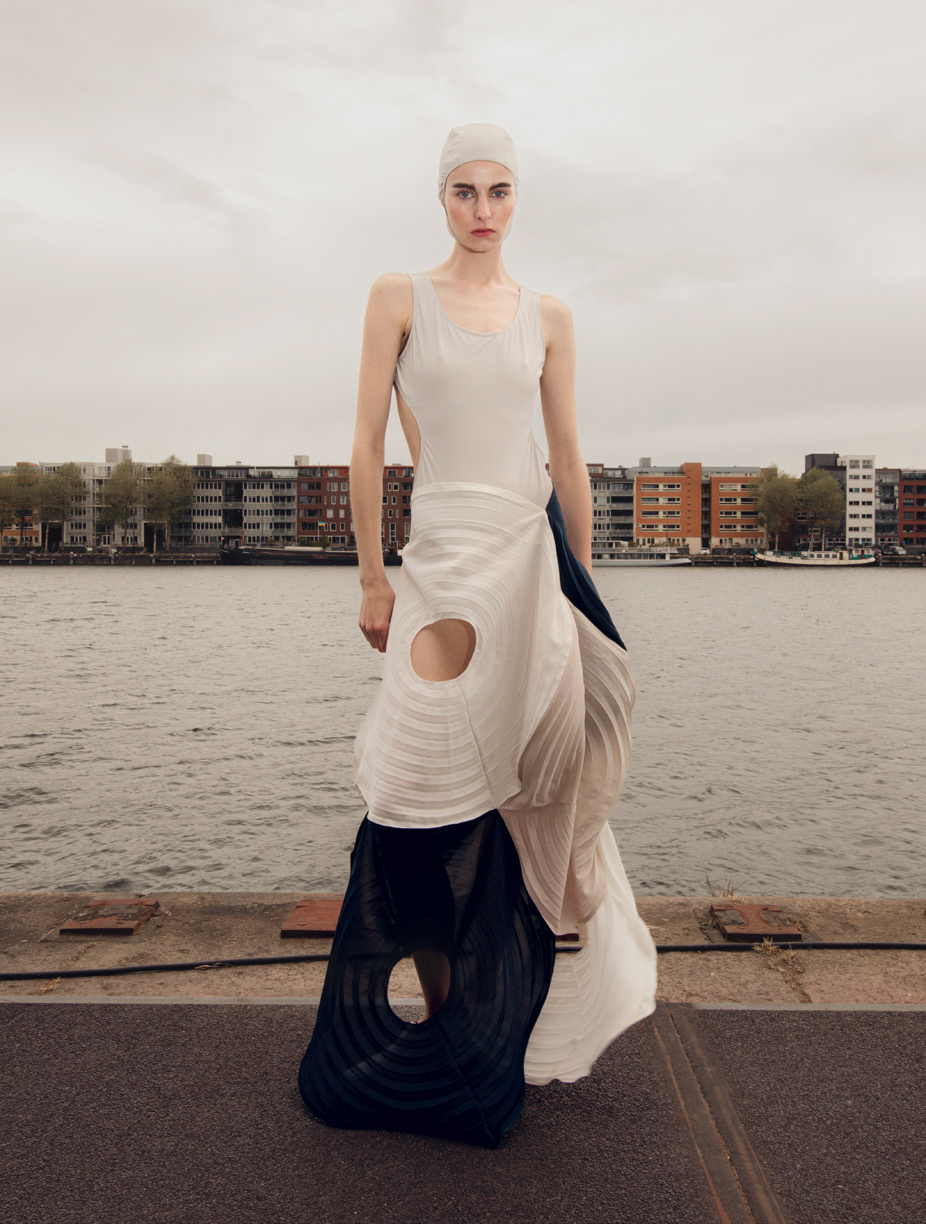

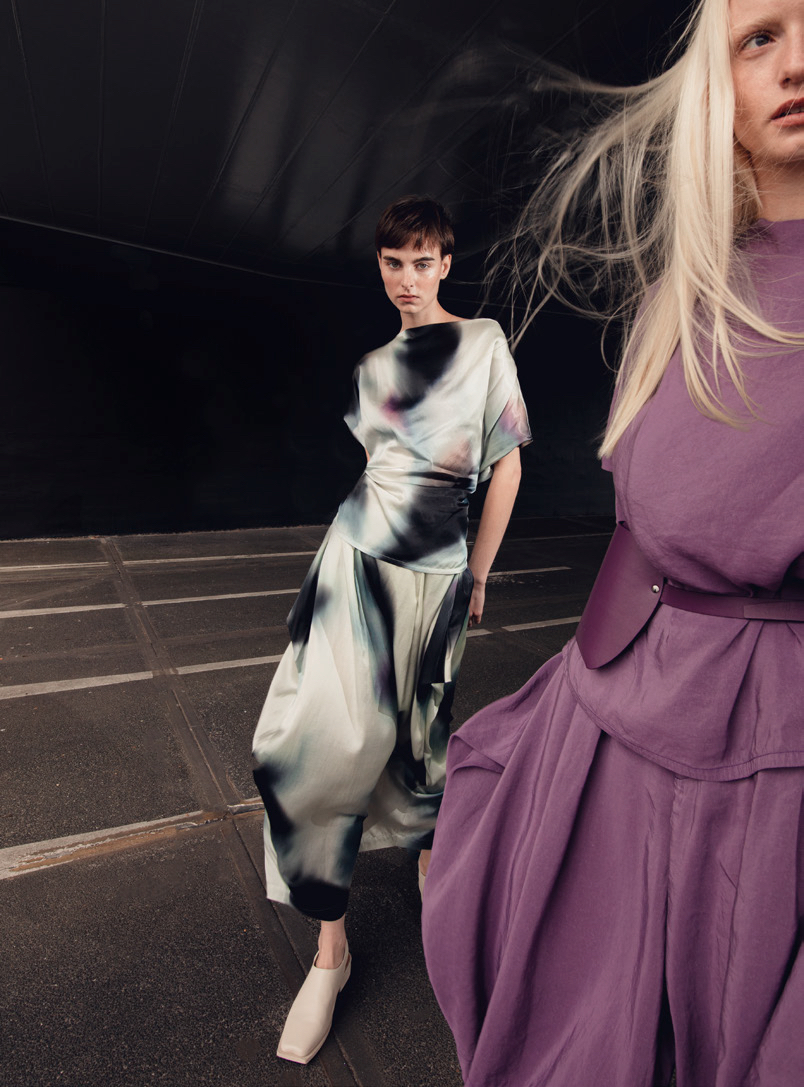
The enchanting collection itself was presented via a film that further elevated Kondo’s story. Directed by the award-winning Japanese video director Yuichi Kodama, the film brought the viewer along to said depths. However, the depths in question is an empty structure that the models descend through. The water is indicated to the viewer by delicate computer-generated ripples in the air and underwater noises weaved throughout the electronic sound design. Models walk and dance as they go down — mimicking the journey into the ocean. The genius of the film is the poetic and fluid relationship formed between water and technology. Making the collection feel that much more contemporary, Kondo advances the Miyake goal to “create garments with longevity, which involves we not only create using quality materials but also create timeless designs”. This relentless and innate intuition is pushing the already progressive roots of the house to a novel new epoch.
His stunning artistic story breaths a new spirit into the Issey Miyake lexicon. While maintaining the Miyake ethos, his powerful intuition brings a fresh reimagination of what’s still left to explore in not only fashion but the world. When we asked about the future, he maintains, “I would like to continue to engage in our special process that progressively explores and expands. I also hope that this year we can present the collection in Paris to deliver a sense of joy in a direct way.” As his voice as the Director of Design continues to emerge, there’s no question that Kondo is guiding us through a metamorphosis; one of new innovation, organic imagination, and of course, more pleats. This direction parallels his own personal rhythm, one that aligns with the notion we at Glamcult are exploring, “both dawn and dusk are probably the times of the day that I like the most. I like them because, compared to midday, during these times you feel the speed and the movement of light and time.”
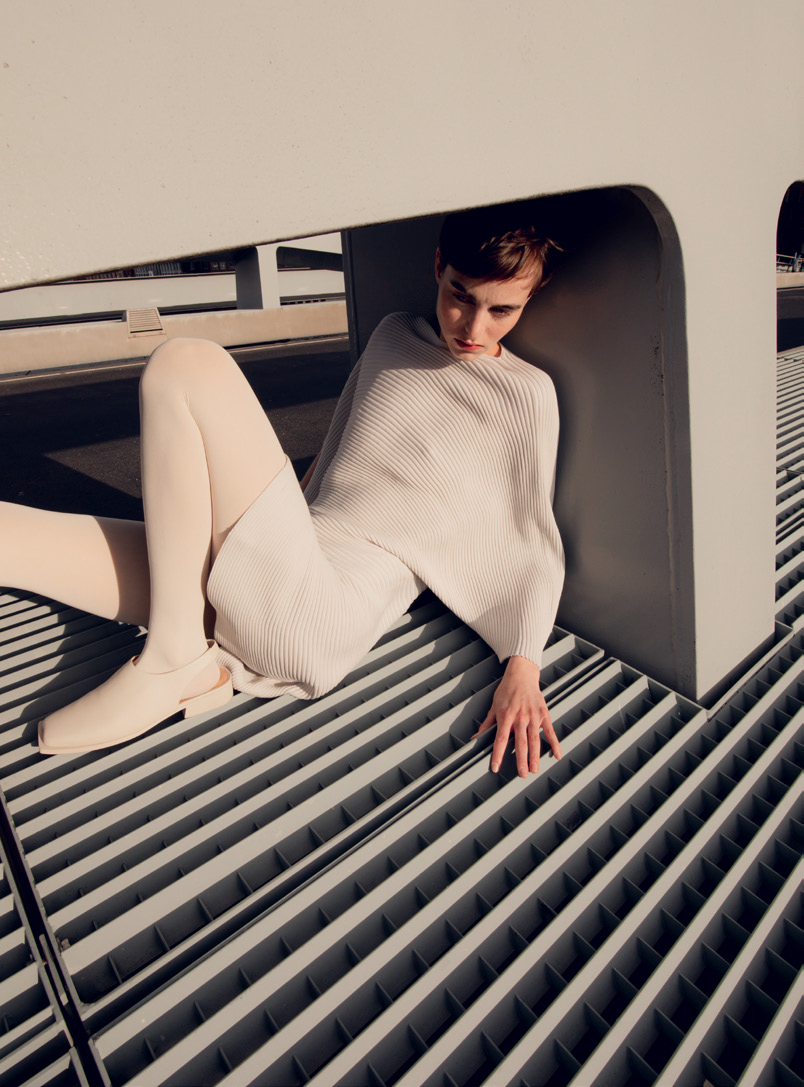
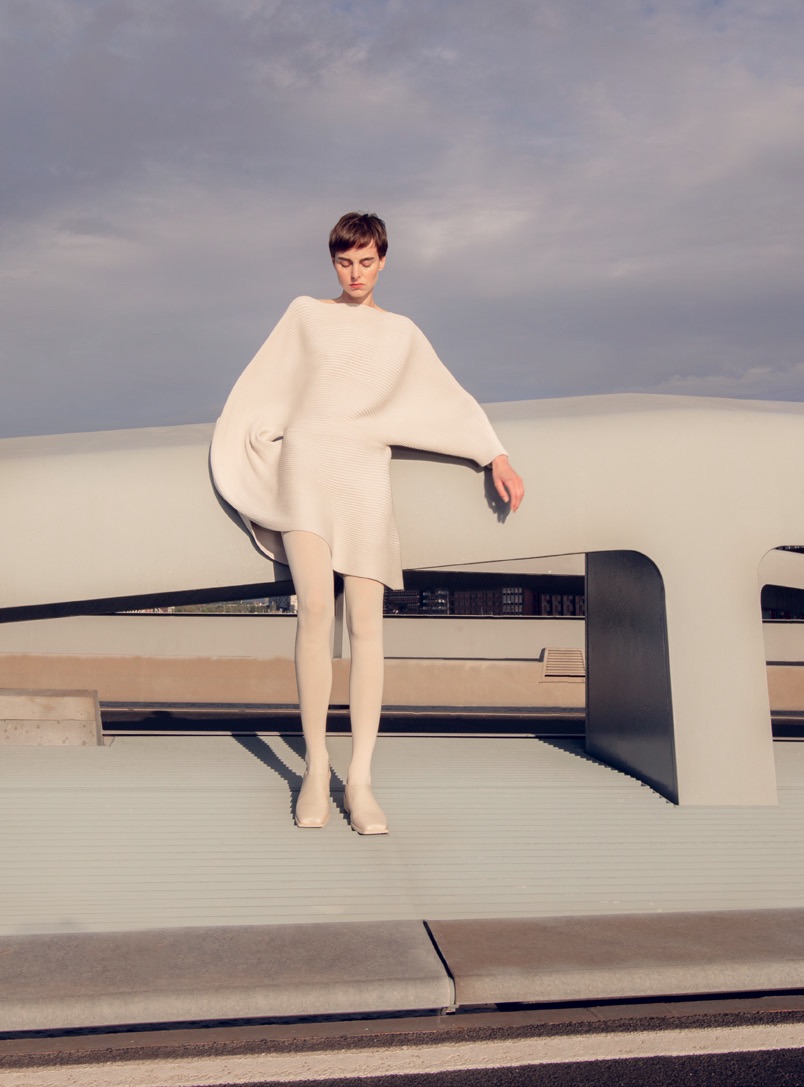
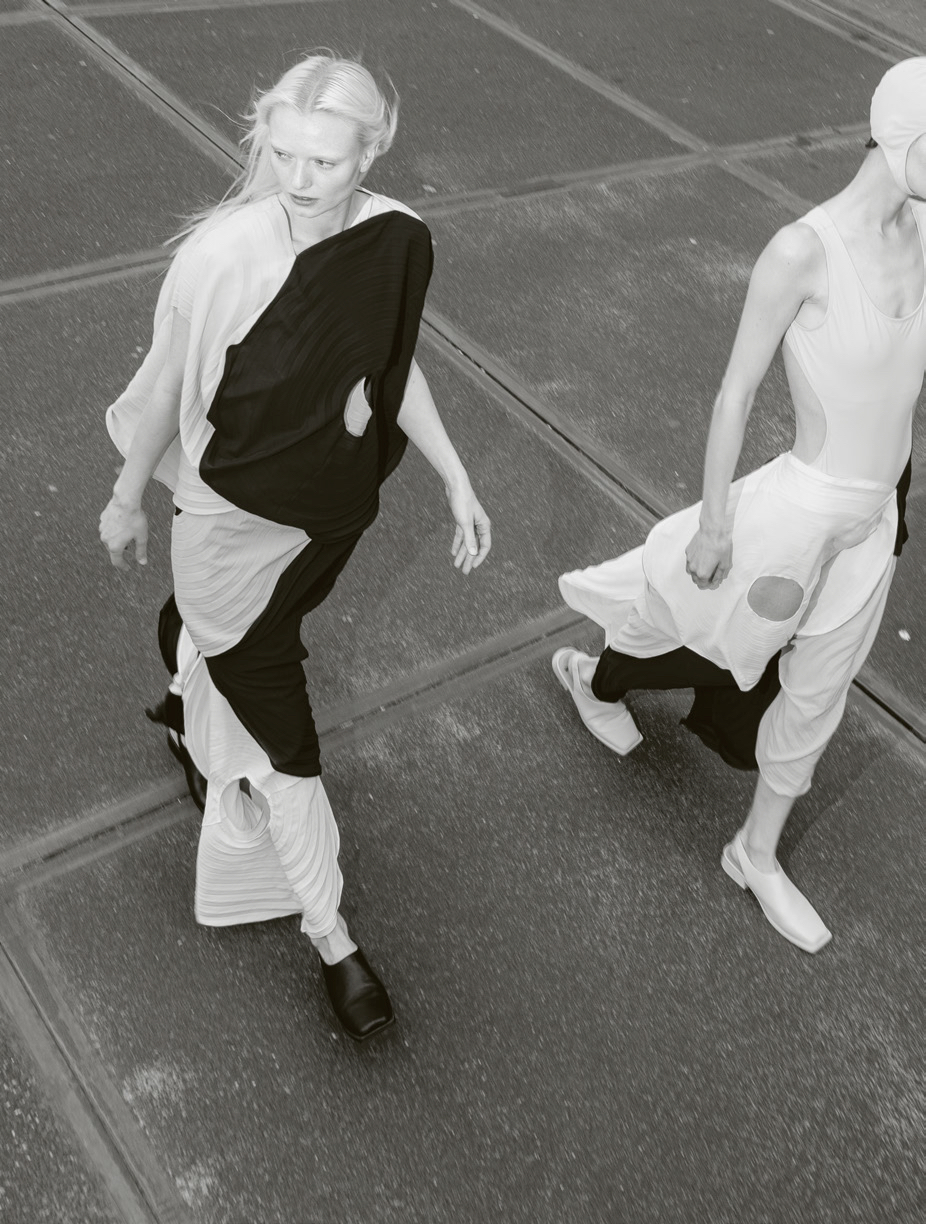
All clothing Issey Miyake Spring/Summer ‘22
Photography by Anton Fayle @ Intitals LA
Styling by Veronica Ruggeri
Hair and Make-up by Britt Breider @ House of Orange
Modelled by Easy May @ The Movement Models and Estella @ Ulla Models
Photography assistance by Ushua Goeminne
Styling assistance by Ella Paritsky
Featured in THE DAWN ISSUE
Shop the issue here!
Words by Ella Paritsky & Grace Powell